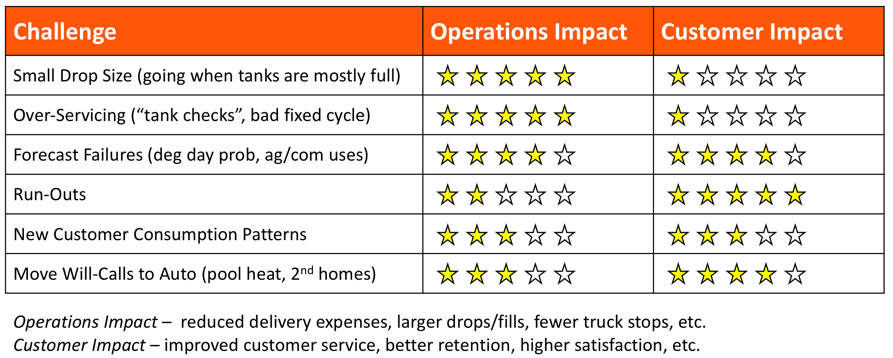We’ve written in the past about different types of propane users and their tank monitoring benefits – homeowners with pool heaters, commercial agricultural greenhouses, backup generators, second-homes, hardware stores with 20# BBQ refill stations, and restaurants & the hospitality industry. In those articles we talk mostly about what the fuel supplier gets out of using tank monitors with those kind of customers – for example better truck efficiency and overcoming forecasting problems. So we often get asked questions like “which of those customers would you say is most in need of a tank monitor?” or “does the fuel supplier or end user benefit more from tank monitors?”.
Like so many other things, the quick answer is the least satisfying – it depends!
The challenges that tank monitoring can help solve sometimes have a bigger impact on fuel suppliers and other times a bigger impact on the customer or end users’ experience. For example, propane customers don’t really feel the pain of over-servicing (for example delivering to a restaurant weekly whether they need fuel or not) but a vacation homeowner that runs out has a terrible customer experience.
So we put together this simple chart of the challenges that we see propane tank monitoring solving everyday. In no particular orders:
- Small Drop Size (going when tanks are mostly full)
- Over-Servicing (“tank checks”, bad fixed cycle)
- Forecast Failures (degree day problems, agricultural or commercial uses)
- Run-Outs
- New Customer Consumption Patterns
- Moving Will-Calls to Auto Delivery (pool heat, 2nd homes)
As you can see from the chart, some challenges have a bigger impact on the fuel supplier, while others have a bigger impact on end users. When we talk about impact in these cases, for a fuel supplier, these are felt as reduced delivery expenses, larger drops (tank fill size), and fewer truck stops. For propane end users, they see the effects in improved customer service, better retention, and higher satisfaction.
 Shop
Shop

